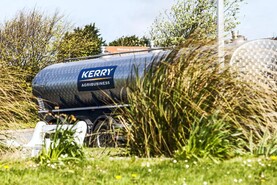Live demos focusing on preventing and treating lameness in dairy herds will be provided at the RUAS Winter Fair by Francis Burns from Buncrana-based Millfarm Hoofcare.
The demos will focus on the Dutch five-step hoof trimming method, which can be used for both routine hoof trimming, and corrective actions when a cow becomes lame.
The first step with the Dutch method is to trim claws to the correct length with nippers or a grinder.
The second step is related to weight distribution between claws, which should be made equal by trimming back any excess horn (outer surface of the hoof) so that both claws are level and carry equal weight when the cow is standing.
The next stage is modelling, and involves taking away excess horn between the claws at the back of the foot. Francis says that this is where bone is closest to the outside of the foot and is a common spot for ulcers or bruising to develop. Removing horn here means that less weight is placed on this area when the cow walks.
“Prevention is better than cure and that is where the first three steps under routine trimming comes in. On most farms it should be carried out once a year at drying off by a trained hoof trimmer,” Francis said.
Steps four and five are measures designed to cure lame cows. Step four takes weight off a painful claw by making a height difference or applying a block/shoe. This transfers the weight to the sound claw.
The final step is to remove loose or under-run horn and hard ridges by strategic trimming in areas where ulcers or infections are likely to develop.
Over-trimming
Francis points out that over-trimming of hooves should be avoided as it usually does not correct the weight distribution of the hoof and can lead to excessive bruising. Trimming should only be done to make weight distribution between claws equal, or shift weight away from a painful claw. He advises farmers to have the facilities and the knowledge to treat individual cases themselves, such as applying a shoe until the hoof trimmer arrives.
“Instead of just being reactive when an incident of lameness is identified, more farmers need to take a proactive approach to hoofcare,” Francis said.
He recommends locomotion scoring all cows in the herd at least once a month. This involves observing how each cow walks and giving an individual score from zero to three, as outlined in Table 1.

Timing of demos
The demos take place at 11am, 1pm and 3pm on the Millfarm Hoofcare stand, which is located in Pavilion 2, stand P61.






 This is a subscriber-only article
This is a subscriber-only article














SHARING OPTIONS: